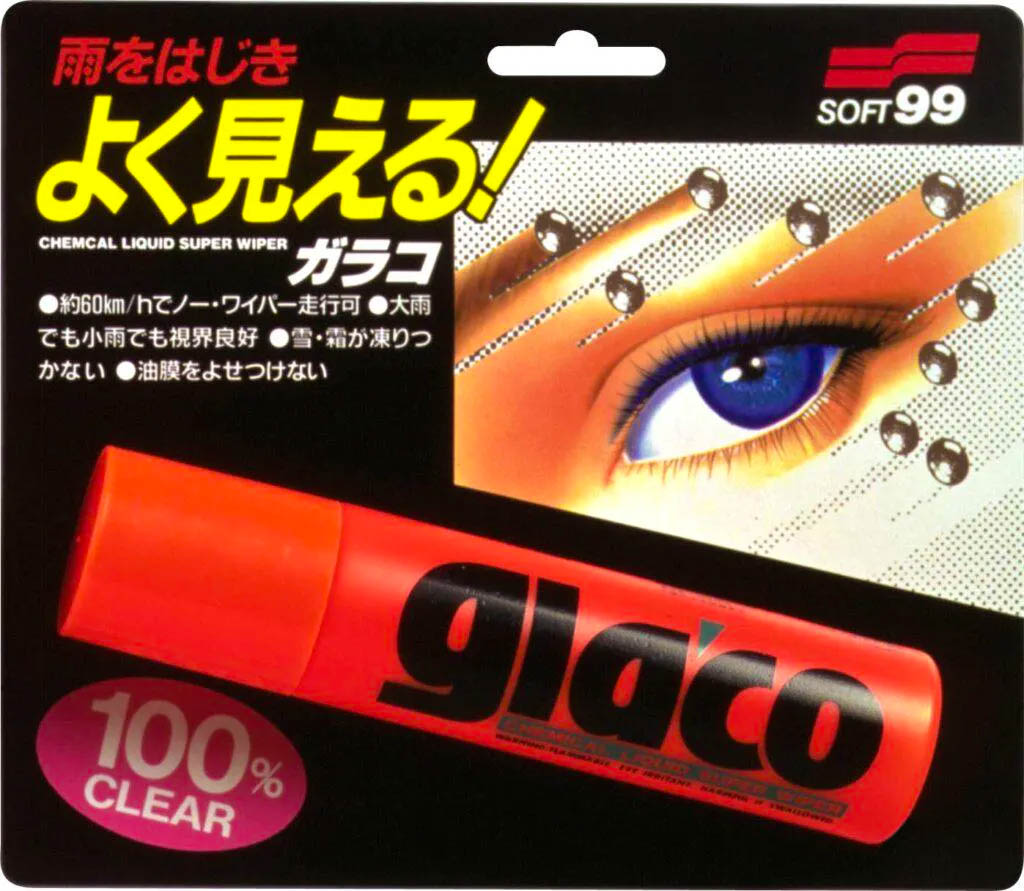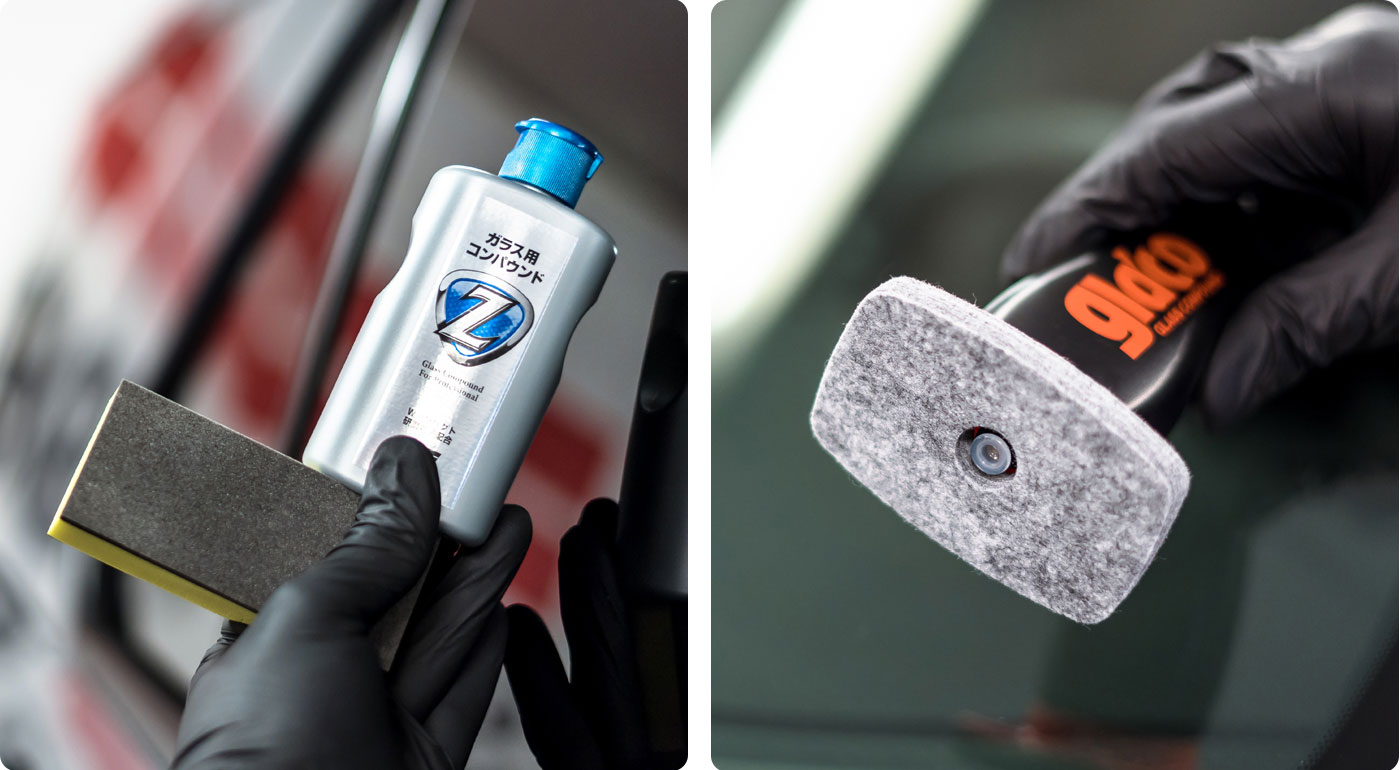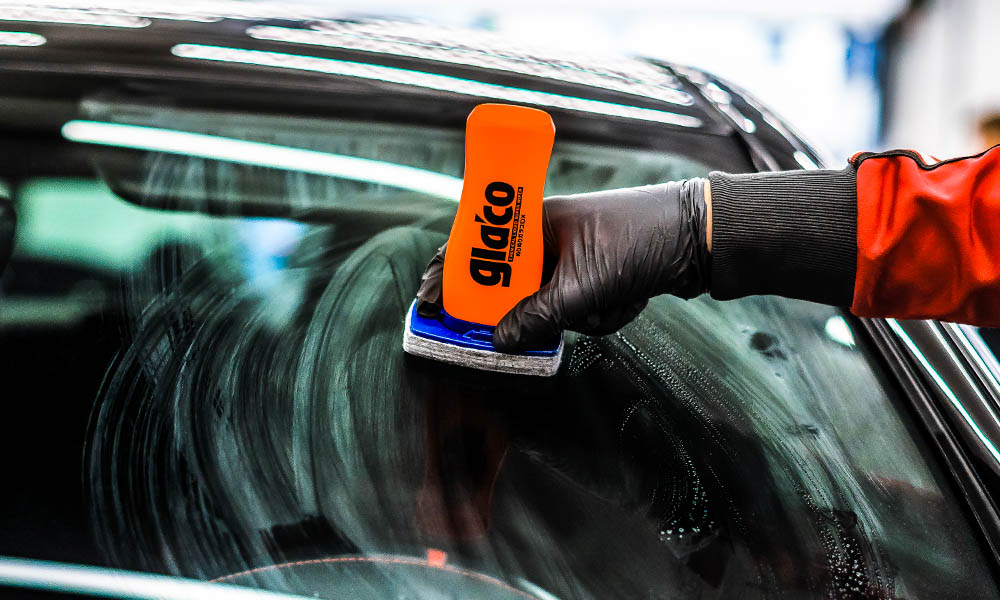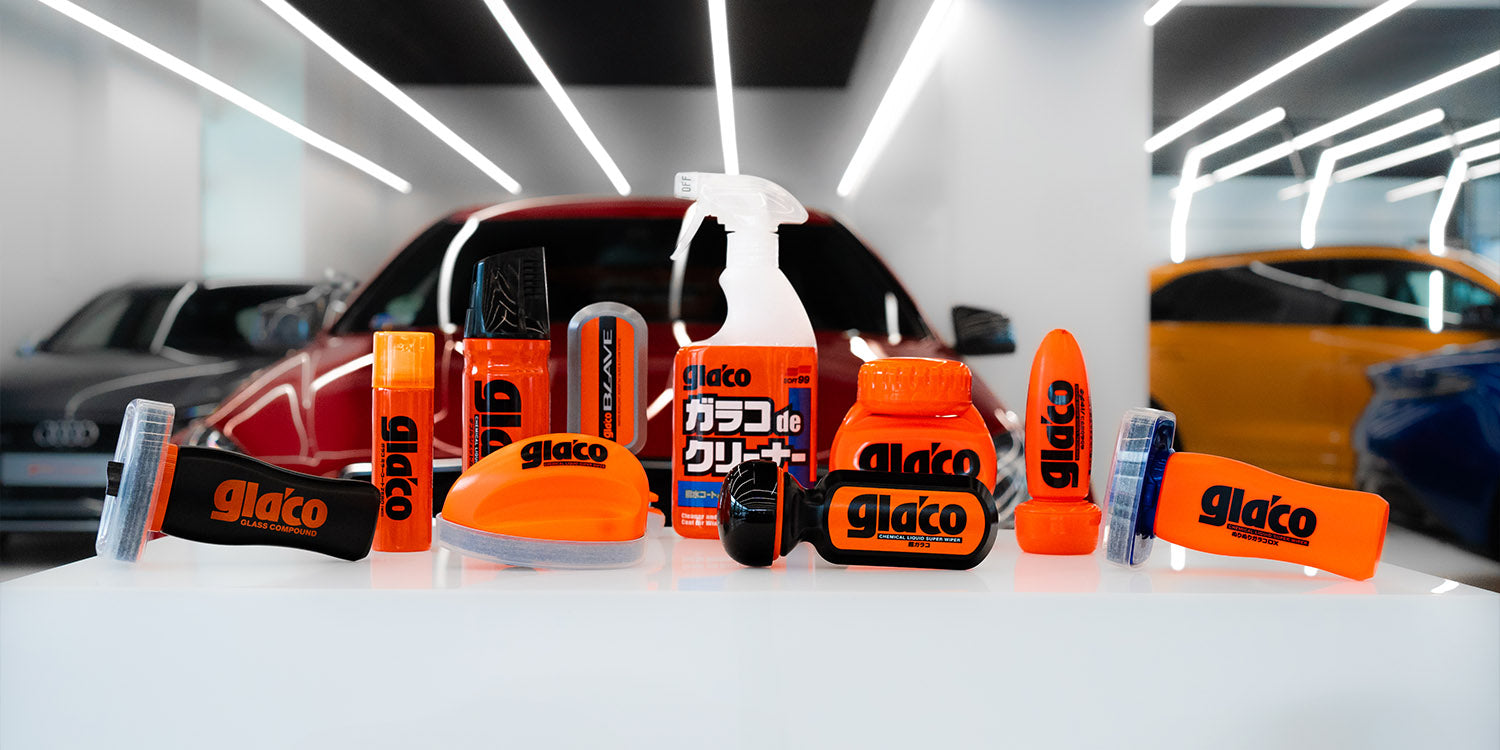Water flows down, escapes, is sometimes repelled, and at other times, it is shed. The hydrophobic phenomenon is known by various names, but do you truly understand how it works? Today, we’ll take you into the world of Glaco, where we’ll unveil all the secrets behind the magical effect of Japanese glass coatings. We’ll also provide some tips to make Glaco perform even better for you.
The story of these orange glass coatings began in a way that might surprise you, as Glaco wasn’t originally designed for cars but for… airplanes! Pilots required better visibility under challenging conditions, which led to the introduction of the first hydrophobic solution for aircraft windshields by Soft99 in 1990.

It didn’t take long for this innovative technology to reach drivers. By 1991, car owners were already using Glaco on their windshields, making the magical effect accessible to everyone. But how does it work in reality?
It’s not magic, it’s chemical perfection
Is glass smooth? It may seem that way, but in truth, glass is a porous material. When viewed under magnification, you can spot hundreds of thousands of microscopic indentations on its surface. This means that untreated glass can trap water on its surface, and over time, these pores fill with dirt, oil residues, and other deposits. The secret behind Glaco is its ability to effectively fill these pores and create a perfectly smooth surface.
After treating glass with Glaco, water effortlessly runs off due to gravity, and while driving, droplets are blown away by the wind. Glaco also minimizes the contact area of the water droplets with the glass, further enhancing the effect. Want to see it for yourself? Notice how round the water droplets are after applying Glaco! And when it comes to dirt resistance, that’s just as crucial as water protection.
Preparation is crucial
Would waxing a dirty car make it shine? Definitely not, and the same goes for applying Glaco on an unprepared windshield. Even the best coating won’t work properly on dirty, greasy windows filled with stubborn deposits. Its effectiveness will be reduced or even unnoticeable, and its durability will be significantly shortened.

Proper and thorough cleaning of the glass is essential. Forget about degreasing with alcohol, polishing pastes, or other homemade remedies. These either don’t work or require professional expertise. For this task, it’s best to use something far simpler and more effective. What’s that? Glaco Compound Roll On or Compound Z! These products, with their unique blend of chemical and abrasive substances based on cerium oxide, remove everything unnecessary from the glass surface in a single step, including years of scale build-up and deposits! Everything you need comes in the package.
Skipping steps can lead to problems: wiper judder and more
If you skip the preparation phase, there’s a high chance that Glaco won’t live up to your expectations. Experiencing poor performance at low speeds? The effect vanishing after a few days? Or maybe the dreaded issue of wiper judder while driving?
The latter typically results from improper glass preparation. When applied to an unprepared surface, Glaco coats it unevenly, causing unpredictable changes in its properties. As a result, the wiper blade encounters varying resistance, leading to jittering. If you add worn-out wiper blades to the mix, the problem becomes almost unavoidable. How can you solve it?
- Preparation: thoroughly clean the glass using Glaco Compound Roll On or Compound Z. If you want to be extra sure the glass is spotless, repeat the process twice.
- Proper technique: reapply Glaco carefully, ensuring that every part of the windshield is covered. The criss-cross application method ensures better coverage. Check out our video guides for help.
- Fresh wipers: replace your wiper blades with new ones. Experts and manufacturers recommend changing them every six months, ideally when transitioning from winter to summer. If you drive frequently, you might need to replace them even sooner.
- Glaco on the wiper blade: in some cases, applying Glaco to the wiper blades can help. Simply run the applicator along the rubber part of the wiper blade. Alternatively, apply Glaco to a clean microfiber cloth by gently squeezing the bottle and then running the microfiber along the wiper blade.
- Wiper mechanics: lastly, make sure the metal arms of the wipers aren’t bent or misaligned, and check that the wiper mechanism is tight enough (but not overly tight!).
Glaco can do even more!
Hydrophobicity isn’t Glaco’s only strength, and you can benefit from its many advantages throughout the year, even in dry, hot summer weather. How does it work? The coating acts as a shield for your windows. In the rain, it repels water; in winter, it reduces frost and ice adhesion; and in the summer, it makes removing insect remains, bird droppings, and tree sap easier. Some tools become less necessary – your wipers won’t need to work as hard in the rain, you won’t always need an ice scraper in winter, and a pressure washer will be enough to restore your windows’ cleanliness and clarity.

Let’s not forget the invaluable impact of clean, dirt- and water-repellent windows on driving safety and comfort. A regularly cleaned windshield stays clear in all conditions, which is especially important at night when oncoming headlights don’t reflect dirt and debris, obstructing your vision. This is why we proudly lead the discussion on Glaco and glass coatings in the context of road safety.
Whether you’re a fan of clean cars or value comfort and visibility while driving, enjoy the power of Glaco and see how much simpler a driver’s life can be!


 Europe | €
Europe | €
 Deutschland | €
Deutschland | €
 Polska | zł
Polska | zł
